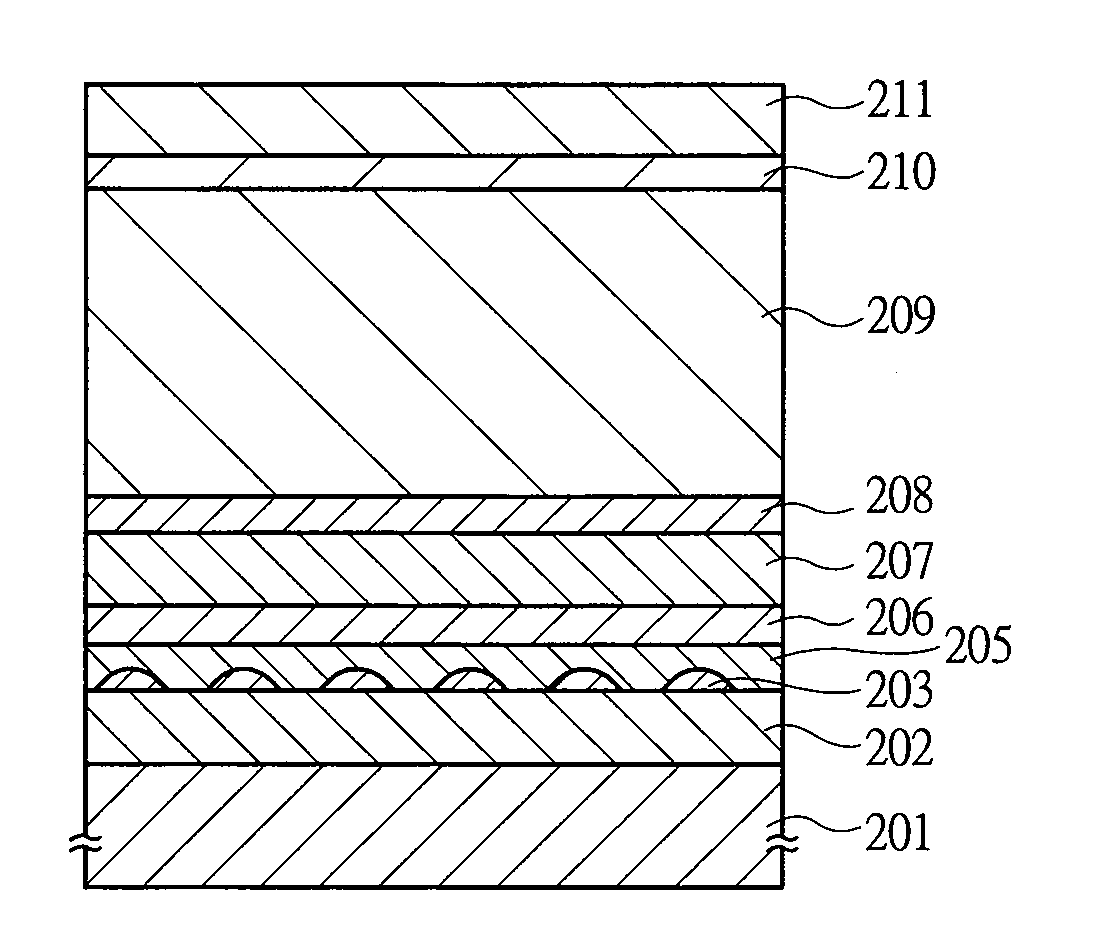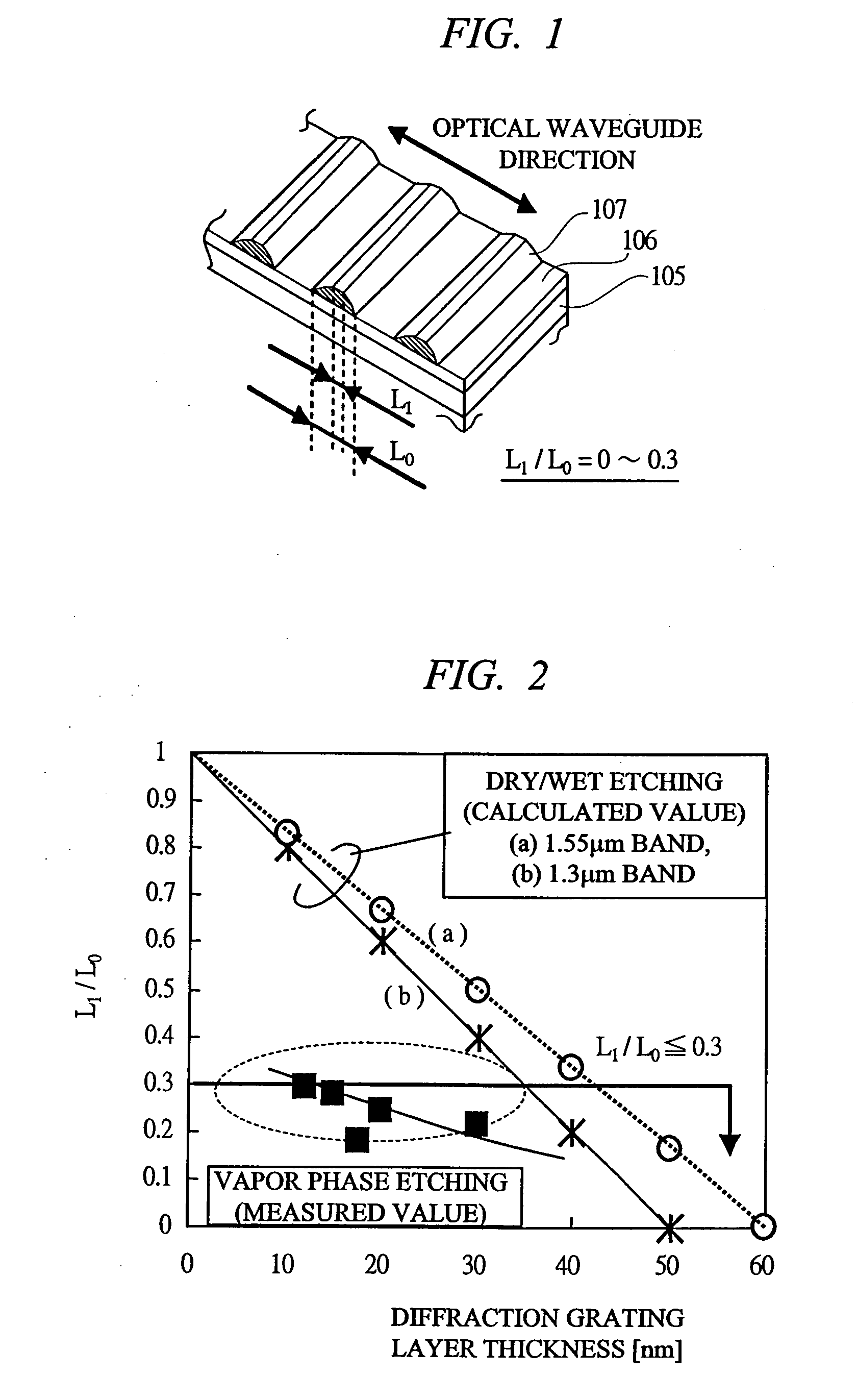Semiconductor laser device and method of manufacturing the same
a semiconductor laser and laser technology, applied in the direction of laser optical resonator construction, lasers, semiconductor lasers, etc., can solve the problems of large variation in device characteristics, low crystallinity, and inability to meet the requirements of laser operation, so as to reduce the oscillation threshold and improve the optical output efficiency of the semiconductor laser device.
- Summary
- Abstract
- Description
- Claims
- Application Information
AI Technical Summary
Benefits of technology
Problems solved by technology
Method used
Image
Examples
first embodiment
[0036]FIG. 3 is a drawing that shows a process chart of a semiconductor laser device manufacturing method according to a first embodiment of the present invention.
[0037]On an n-InP substrate 101, an n-InP first clad layer 102, an n-InGaAlAs first optical guide layer 103, an InGaAlAs active layer 104, a p-InGaAlAs second optical guide layer 105, a p-InP spacer layer 106, a p-InGaAsP diffraction grating layer 107, and a p-InP cap layer 108 are laminated through MOCVD (FIG. 3A). To enhance a carrier confinement effect, the InGaAlAs active layer 104 has an MQW configuration consisted of an InGaAlAs barrier layer and InGaAlAs well layer. Also, in consideration of controllability over a process of forming a diffraction grating, the diffraction grating layer is made to have a film thickness of 25 nm.
[0038]Next, through CVD, an insulating film 109, such as a silicon dioxide (SiO2) film or a silicon nitride (SiN) film and the like, is formed. After a resist film 110 is applied, stripes with ...
second embodiment
[0046]FIG. 4 is a drawing that shows a process chart of a semiconductor laser device manufacturing method according to a second embodiment of the present invention. In this embodiment, a method of manufacturing a semiconductor laser device, in which a diffraction grating is disposed on a lower side of an active layer, is described.
[0047]On an n-InP substrate 201, an n-InP first clad layer 202, an n-InGaAlAsP diffraction grating layer 203, and an n-InP cap layer 204 are laminated through MOCVD (FIG. 4A). Here, the n-InGaAsP diffraction grating layer 203 is made to have a film thickness of 25 nm, similar to that of the first embodiment.
[0048]Next, an insulating film is formed through CVD and, a diffraction grating is formed using a process similar to that of the first embodiment (FIG. 4B).
[0049]After that, through MOCVD, burying regrowth of the diffraction grating is performed. Immediately before regrowth, as with the first embodiment, halogen-based gas is supplied so that the side su...
PUM
 Login to View More
Login to View More Abstract
Description
Claims
Application Information
 Login to View More
Login to View More - R&D
- Intellectual Property
- Life Sciences
- Materials
- Tech Scout
- Unparalleled Data Quality
- Higher Quality Content
- 60% Fewer Hallucinations
Browse by: Latest US Patents, China's latest patents, Technical Efficacy Thesaurus, Application Domain, Technology Topic, Popular Technical Reports.
© 2025 PatSnap. All rights reserved.Legal|Privacy policy|Modern Slavery Act Transparency Statement|Sitemap|About US| Contact US: help@patsnap.com



